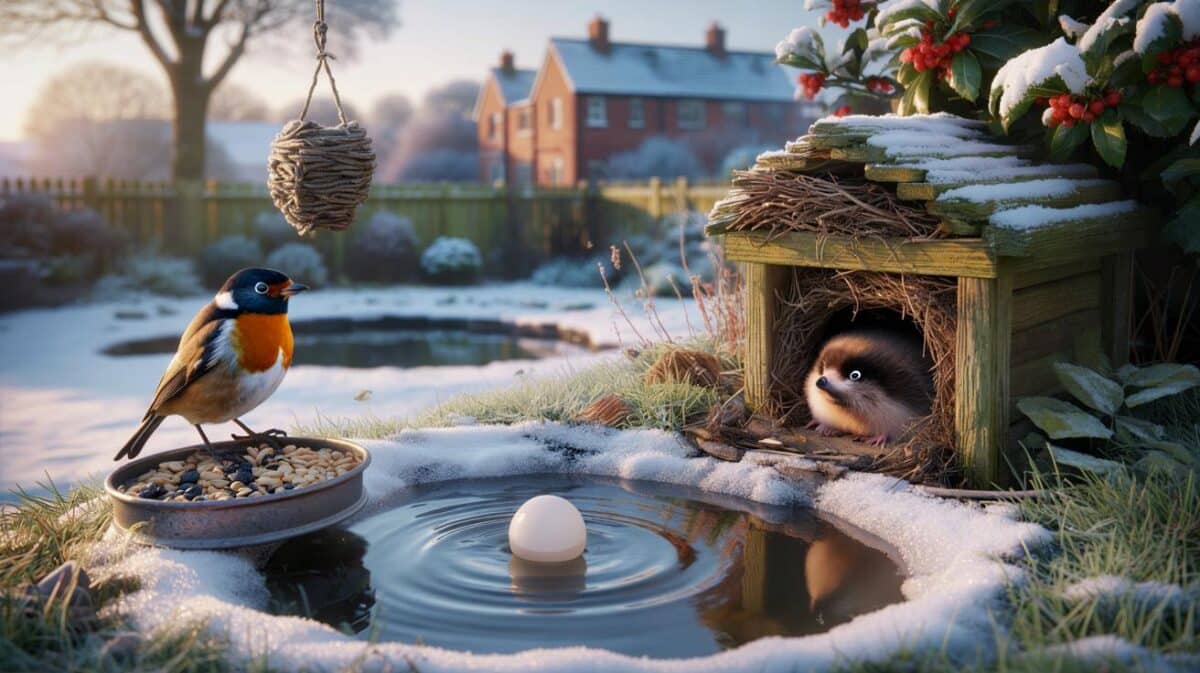Here is the quiet shift that helps you see far more.
When temperatures dip and hedges thin out, the nation’s gardens turn into easy stages for birdwatching. With insects scarce and natural food reduced, a well placed garden feeder can draw visitors you might not expect to see up close.
That is where guidance from the RSPB becomes gold dust for a chilly morning stakeout. Their experts point to a mix of resident favourites and seasonal arrivals, each with distinctive clues. The trick is knowing what to look and listen for.
The winter visitors quietly slipping into uk gardens
In the colder months, migrants join our resident species in search of food and milder weather. The redwing is one of those travellers and, as RSPB spokesperson Louise Mahon puts it, « our smallest true thrush ». Their energy is infectious, darting between hedgerows, yet they vanish in a blink unless you know the hotspots.
Red berries offer your best chance. Louise Mahon says, « Their skittish nature can make them tricky to spot, » before offering a reliable tip. « But keep a close eye on the red berries of trees such as the Rowan, Hawthorn or Holly, which often play host to many grateful Redwings. »
Another winter thrush, the fieldfare, often arrives in mixed flocks. It shares that speckled look with redwing, yet its size and accent give the game away. Louise Mahon notes their giveaway soundtrack, calling them birds with « loud ‘chak-chak’ calls, » and points to the grey head and rump that separate them from their smaller cousins.
Red berries and a simple trick to spot shy thrushes
Holly, rowan and hawthorn act like neon signs for hungry thrushes when the weather turns. Work the edges of lawns and hedges and you may find redwing sliding through, sometimes in step with fieldfare. Pause, scan, then scan again. It wont take long.
You can keep your search grounded and deliberate. Follow flocks as they move between berry trees and nearby cover, especially in the first hour of daylight. Short bursts of activity are common on frosty mornings, and the contrast of winter’s monochrome makes the brick-red flank of a redwing easier to pick out.
The starling show above your street and the sounds to recognise
Come late afternoon, eyes up. Thousands of starlings can roll across the sky in those mesmerising winter murmurations before dropping to roost. Not every town has that sweeping display at dusk, but the magic can sit right on your patio too. « An encounter with a single bird or small flock in your garden can be just as mesmerising, » says Louise Mahon.
She calls them unmistakable in their cold-season finery, with winter plumage of « white spots set against a glossy purple and green sheen ». Then there is the soundscape. « In addition to their own calls, these noisy and confident birds can mimic an incredibly broad range of clicks, burrs and cheeps, as well as other species such as Jays and Buzzards, » adds Louise Mahon. It is a racket, but a joyful one.
- Check berry-laden trees for redwing and fieldfare, scan the ground beneath feeders for chaffinches, and watch hedges for small, lively flocks of long-tailed tits.
Bringing robins, chaffinches and long-tailed tits closer to your garden feeder
Few sights feel more British than a robin on a frosted branch. Louise Mahon asks, « Is it truly Christmas without a robin outside your window? » They punch well above their size and hold their patch with spirit. When the landscape quietens, their voice carries. « Robins are also one of the few UK birds to sing all year round, sometimes even at night, » she says.
Now look down for the chaffinch. Instead of hovering at a tube, it prefers to forage where seeds and scraps fall. « Chaffinches prefer to feed on the ground, » says Louise Mahon. To make your set-up more welcoming, scatter food on a flat surface or on the ground, as these shy birds prefer those spots over hanging feeders. Identification is a pleasure too. « Females are a light, olive-brown colour with white wing bars, whilst the males have a distinctive blue-grey cap and neck, with pinkish orange cheeks and chest as well as white wing bars, » explains Louise Mahon. One final tip from her, « Listen out for their high-pitched calls too – you can often hear a Chaffinch before you see it, » she adds.
Keep an ear open for a fizz of chatter and you may find a small gang of the long-tailed tit. Round bodies, stick-straight tails and black-and-white markings make them rather unmistakable. Louise Mahon highlights their « bouncing style of flying » and offers a simple cue for timing. « Look out for them in small, lively flocks around your garden, » she says, especially as they circuit between shrubs and feeders during cold snaps.









